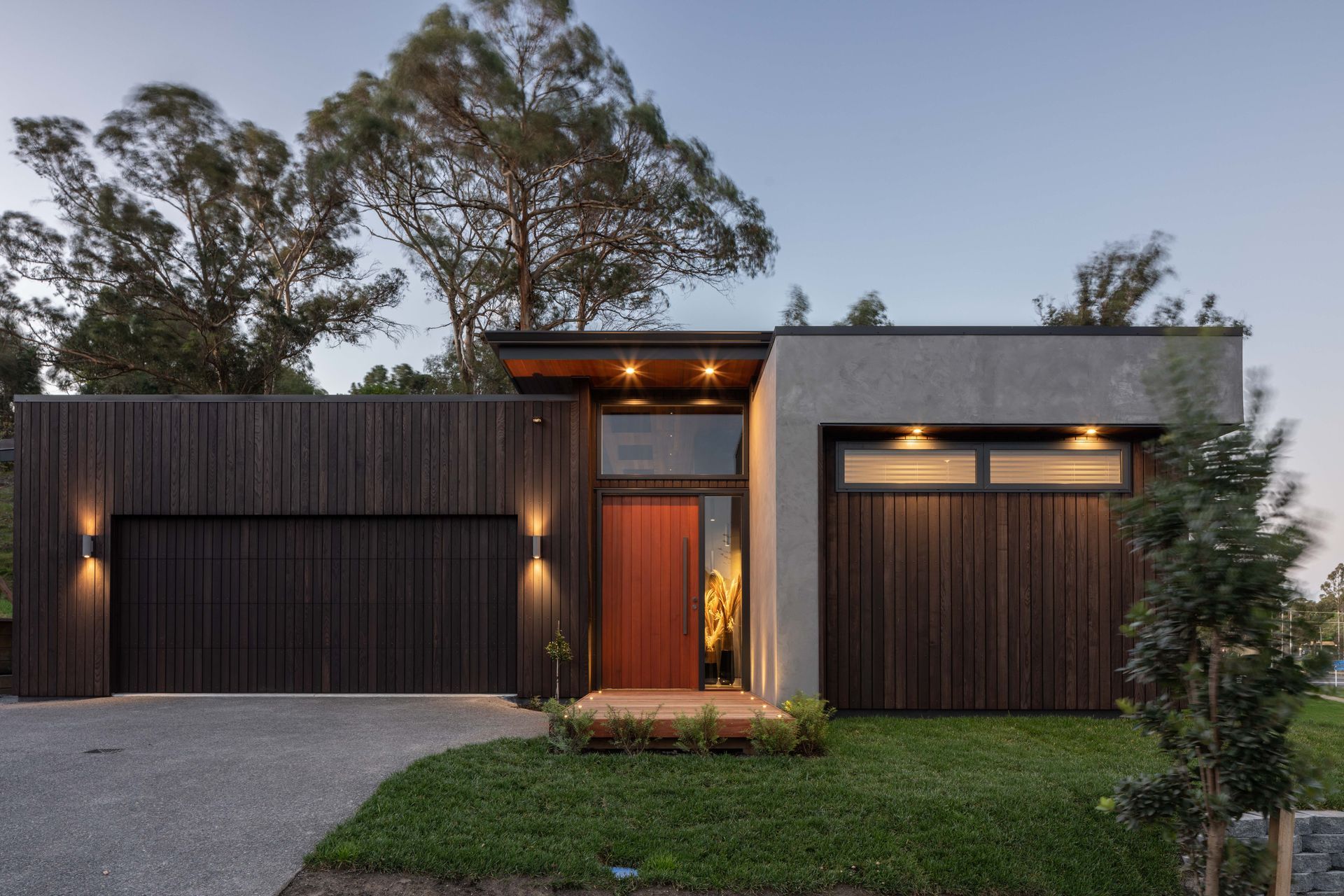Discover the no-chemical timber modification process providing alternatives to cedar cladding
Written by
22 February 2023
•
3 min read

Prior to Covid-19 and the ongoing supply-chain problems in the building industry, cedar was the go-to cladding for architectural builds across the country. In fact, if you wanted an alternative, you’d have been hard-pressed to find a supplier.
But the pandemic brought with it many challenges, some of which were the availability, grade and price of cedar cladding. Suddenly, a lot more people were open to alternatives, because it could mean the difference between completing a project or not.
Timberline’s Matt Gray says it opened the door for alternative species to come through, however, not all species are suitable for exterior use in their natural state.
“Timbers are more or less stable depending on the species. Timbers with high moisture content are a lot more susceptible to moisture related deformation – so cupping, bending and bowing.”
Ultimately this renders them unsuitable for exterior use, unless chemically treated.
However, a new thermal modification process means timbers that may have otherwise been unsuitable for exterior claddings, can now be specified.
The thermal modification process involves putting timber into a pressure cooker which takes a lot of the moisture and sugars out. The wood is essentially cooked and the steam stops it from catching fire.
“What this process does is increase the timber's durability, because a timber with less water in it is less likely to move or have any moisture-related problems further down the track. And it also gets rid of the sugars or the cellulose in timber, which is a way of making it less appealing to fungi and bacteria.”

H3.1, H3.2, are H1.2 chemical treatments are another way of increasing timber's durability but the downside is you are introducing chemicals into the timber.
“That’s one of the key benefits of this process – there aren’t any nasty chemicals. It means the timber can be safely used as an interior cladding, too.”
The ability to use thermal modification to increase different timber species’ durability, has meant a number of new timber species are available on the market, providing options for people who want an alternative to cedar.
Timberline supplies two types of thermally modified timber, which can be used as both decking and cladding.
“We chose to bring only two species into New Zealand and they’re contrasting species. Thermory Ash is a hardwood and is a lot darker in colour and cleaner in grade; and Thermory North Pine is a softwood, it's slightly lighter in colour and more rustic in grade with a few more knots.”

Thermal modification makes seamless outdoor decking to indoor flooring possible
Seamless indoor to outdoor flooring/decking is a popular look in international architecture, but it’s been tricky to achieve in New Zealand until now.
One of the ways of getting around the issue of matching up materials from indoor to outdoor is to use an outdoor timber that’s commonly used inside. However, if it's riddled with chemicals, it's probably not suitable for a family environment.
“We had a couple of enquiries about flowing Thermory Ash decking timber into the interior and we are capable of doing that. It’s a great way of creating a seamless and contemporary look, without bringing any toxins inside.”
Using the exact same tone and grade timber on indoor and outdoor settings means some clients are matching their decking, cladding, interior flooring and cladding seamlessly, says Matt.
“The Thermory timber products really do open up endless possibilities for anyone who wants seamless timber materiality or an environmentally friendly alternative to cedar.

Discover thermally modified alternatives to cedar

